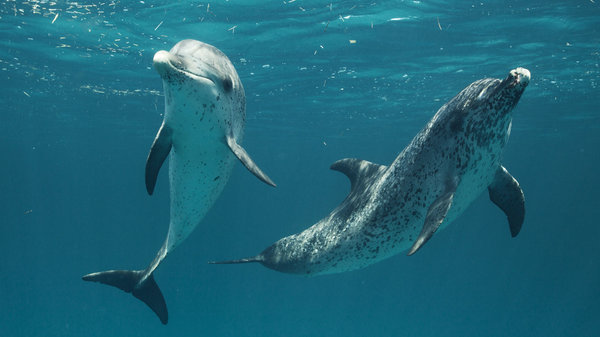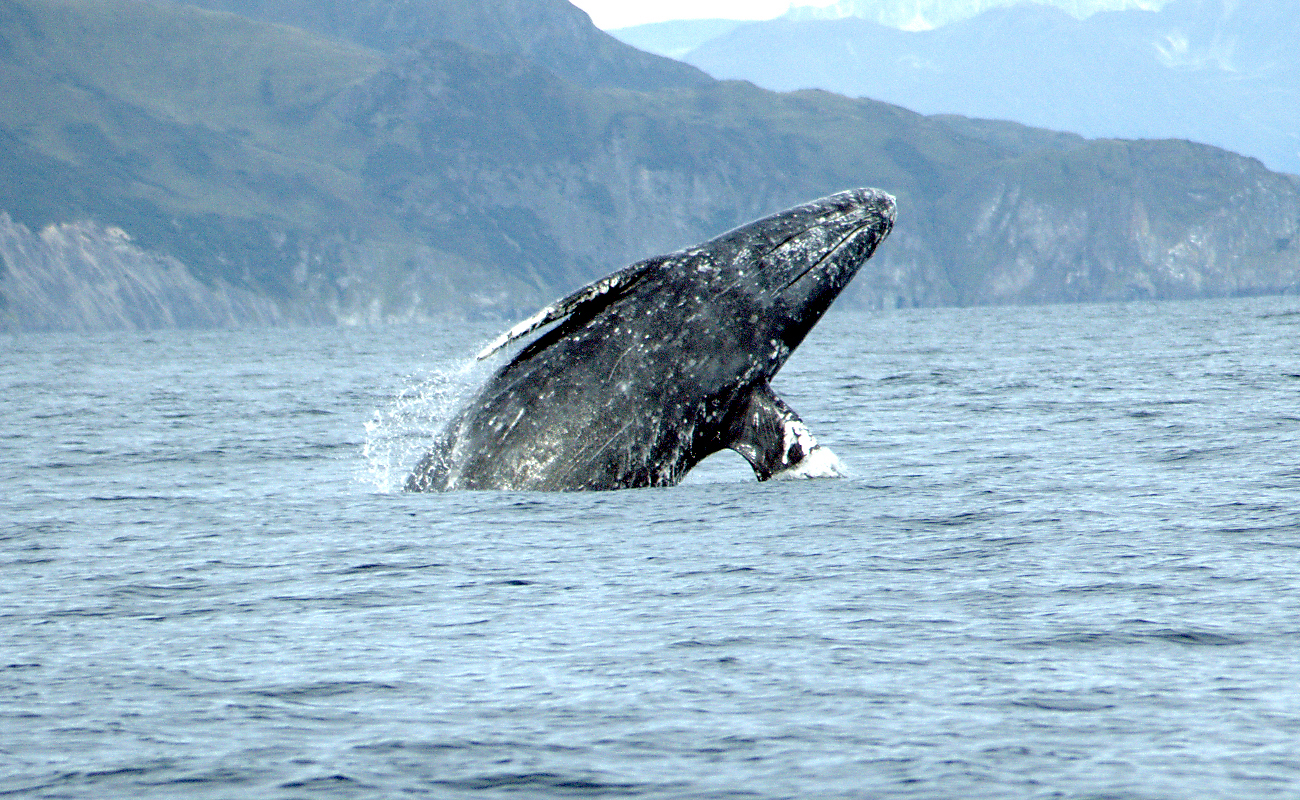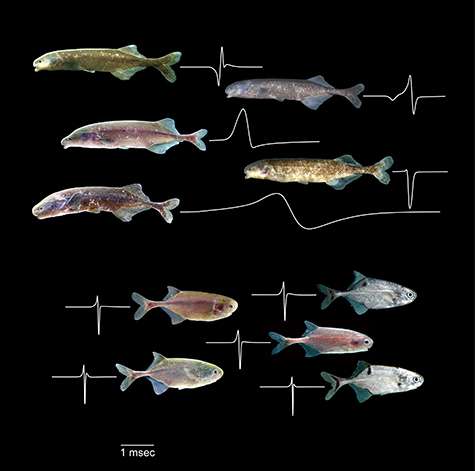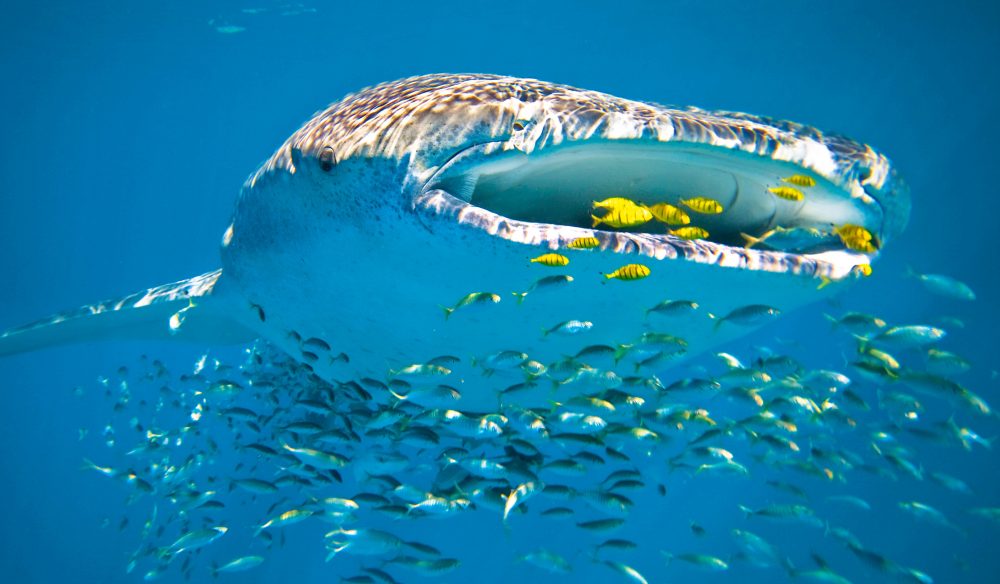The Galapagos Islands are known for their diverse and unique species, one of which is the Galapagos penguin. This penguin is the only penguin species in the Northern Hemisphere and is not considered an endangered species as well as the rarest penguin in the world. A new study published in Geophysical Research Letters reviewed the wind and current patterns over the last 30 years and the impact that they have had on the penguin population. Climate change could shift wind patterns and ocean currents, expanding cold water further north and increase the fish numbers. Penguins, as well as other animals on the islands, are innocent bystanders experiencing feast or famine depending on what the currents are doing from year to year. Read more…
 This week, NPR discussed Susan Casey’s new book Voices in the Ocean: A Journey into the Wild and Haunting World of Dolphins. Casey’s book discusses the fact and fiction of this species and the man-made threats that they face. Dolphins are still heavily hunted in Taiji and are sold to marine parks or even killed and sold for meat. Both sonar and noise have created disorientation and impacted the dolphin populations. To learn more about the book read and listen here…
This week, NPR discussed Susan Casey’s new book Voices in the Ocean: A Journey into the Wild and Haunting World of Dolphins. Casey’s book discusses the fact and fiction of this species and the man-made threats that they face. Dolphins are still heavily hunted in Taiji and are sold to marine parks or even killed and sold for meat. Both sonar and noise have created disorientation and impacted the dolphin populations. To learn more about the book read and listen here…
 A recent study in the journal Proceedings of the National Academy of Sciences discusses the tracked survival of the chinook and coho salmon. Historically, many Pacific salmon species were thought to be influenced by the Pacific Decadal Oscillation (PDO) but now the North Pacific Gyre Oscillation (NPGO) also shows that it may create an impact. This new study found that the NPGO has made a significant impact on the salmon survival rates. Read more…
A recent study in the journal Proceedings of the National Academy of Sciences discusses the tracked survival of the chinook and coho salmon. Historically, many Pacific salmon species were thought to be influenced by the Pacific Decadal Oscillation (PDO) but now the North Pacific Gyre Oscillation (NPGO) also shows that it may create an impact. This new study found that the NPGO has made a significant impact on the salmon survival rates. Read more…
Here at Sea Save we love our oceans and we also love new technology that helps us further our education! The Woods Hole Oceanographic Institute (WHOI) recently used an unmanned aerial vehicle (UAV) to take some full body pictures of 36 whales. the drone flew 125 feet above the ocean surface to take the shots but then dropped down for a closer look! At 10 feet above the water, the drone took 20 breath samples from 16 whales. These samples will help scientists analyze the DNA, hormones, and bacteria to reveal species characteristics. Read more…
5. Gray Whale Calf Spotted off SoCal Coast
 This week, a baby gray whale was spotted in Marina del Rey. The whale was likely feeding in the marina and got separated from its mother. The 15-foot gray whale mother beached itself over the weekend and while the calf reentered the water. It is unusual to see this species in the California waters as they should have already migrated to northern waters near Alaska. This disorientation is likely a result of warmer waters created by climate change. Read more…
This week, a baby gray whale was spotted in Marina del Rey. The whale was likely feeding in the marina and got separated from its mother. The 15-foot gray whale mother beached itself over the weekend and while the calf reentered the water. It is unusual to see this species in the California waters as they should have already migrated to northern waters near Alaska. This disorientation is likely a result of warmer waters created by climate change. Read more…
 A few weeks ago we reviewed a story that discussed the electric signals that are used by a few fish species. A biologist at Washington University in St. Louis, Bruce Carlson, furthered this study to determine that the receptors in less discriminating fish encode signals differently than the more discriminating fish. The fish that are able to register the small differences in communication signals are generally solitary and territorial, whereas the fish tuned to group signals tend to be more gregarious. Carlson states that, “these two different lifestyles place a very different selective pressures on communication. If you’re solitary and territorial and you detect another fish in the area, you want to know exactly who that shit is. Is it a potential competitor, a potential mate, or a different species you’re not worried about ?” Read more…
A few weeks ago we reviewed a story that discussed the electric signals that are used by a few fish species. A biologist at Washington University in St. Louis, Bruce Carlson, furthered this study to determine that the receptors in less discriminating fish encode signals differently than the more discriminating fish. The fish that are able to register the small differences in communication signals are generally solitary and territorial, whereas the fish tuned to group signals tend to be more gregarious. Carlson states that, “these two different lifestyles place a very different selective pressures on communication. If you’re solitary and territorial and you detect another fish in the area, you want to know exactly who that shit is. Is it a potential competitor, a potential mate, or a different species you’re not worried about ?” Read more…
 DISCLAIMER- This is an upsetting and appalling story. This week, a whale shark was brutally slaughtered in public on Guangdong shore in China. The gruesome, sickening, and cruel act was caught on tape. The whale shark is a second-class national protected animal in China. Chinese law states that the shark must be immediately released if caught and it is illegal to purchase or sell whale shark meat. Tragic news this week. Read more…
DISCLAIMER- This is an upsetting and appalling story. This week, a whale shark was brutally slaughtered in public on Guangdong shore in China. The gruesome, sickening, and cruel act was caught on tape. The whale shark is a second-class national protected animal in China. Chinese law states that the shark must be immediately released if caught and it is illegal to purchase or sell whale shark meat. Tragic news this week. Read more…




